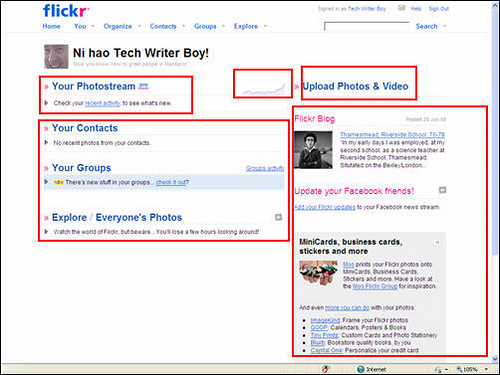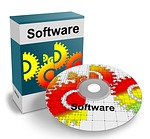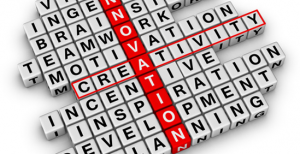Creativity
Affordable 3D Printing May Be Just Around the Corner

Earlier in the semester when I gave a presentation on 3D printing, I suggested that Consumer 3D Printing won’t be mainstream for another 5-10 years. Well, it looks like it may be here sooner than expected. A team of engineers recently set out to develop a cheap, high-quality consumer 3D printer. With their product, named Tiko, they did just that. Tiko is a 3D printer that is easy to use, non-proprietary, accurate, Wi-Fi enabled, and even comes with its own software to design 3D models on (and be sent right to the printer) — and you can get one for a $179 pledge! This piqued a lot (well, several) peoples’ interest. The group of engineers created a Kickstarter campaign with the goal of raising $100,000 in order to further develop and mass produce the printer. As of now, with 10 days left in the campaign, $2,251,129 has been pledged by 12,663 backers — that is around 178x what they asked for.
As the Kickstarter campaign shows, there is a lot of interest in consumer 3D printing. With Tiko, it looks like it may soon be a reality. I personally think a product like Tiko can make a huge impact, especially in the toy industry. As I mentioned a lot in more presentation earlier in the semester, I think that a company like LEGO should be concerned by the arrival of product like Tiko. If I had one, for example, I could print all of the LEGO pieces that I want, and for much cheaper than buying actual LEGO sets.
What do you guys think, though? Do you guys think this could make a significant impact in the consumer industry, or is it still too early for consumer 3D printing to enter the mainstream market? Let me know what you think!
Clarity and Conciseness in User Interface Design

I created a post earlier in the semester that discussed what elements contribute towards “good” software; one of these elements is elegant design, which is lacking in software that is “clunky” as well as bothersome to navigate and use.
A component of design that is more specific and can be more easily analyzed is the user interface, which combines aesthetics with usability. I anticipate that creating a (somewhat) functional but polished user interface will be a challenge for project teams in general, so I located an article that describes what comprises a “successful” user interface.
The article’s author highlights clarity as “the most important element of user interface design” because it must simultaneously communicate meaning and function to users. Conciseness is the next most important element; it demands that designers be careful when adding explanations or definitions to their applications to avoid clutter and confusion. Professor Hohne called for a hybrid of clarity at conciseness while reviewing our prototype during a meeting on Tuesday: “I want to see green, yellow, and red status bars, not a whole lot of extra information.” With this remark, it became clear to me that a successful user interface may actually draw on the same principles as a successful status report document.
Having read through the linked article and this post, what steps should you take to keep your prototype’s user interface clear and concise? Will the responsibility of ensuring clarity and conciseness be left to one person on your design team, or to the entire team? Lastly, how might your approach differ if you had to produce a more complex application?
Is Tesla on The Brink of Disruptive Innovation?
http://abcnews.go.com/Technology/tesla-technology-produce-cars/story?id=30025690
Tesla Motors announced on Monday that they are introducing a new product, but to much dismay it is not a new car. Tesla was creating something new, keeping all consumers in the dark.
“We need the ability to store energy when it’s bountiful and use it when it isn’t bountiful,” Brauer said. “If somebody can come up with a system to time shift energy storage, that would have a lot of potential and go far beyond the automotive industry.”
Rumors are divulging from this comment from a senior analyst at Kelley Blue Book, that it may be some type of home battery.
What types of innovative creations could Tesla have up it’s sleeve?
Practicing Integrative Thinking Skills

This week in class, we are discussing the art and science of integrative thinking. To learn more about integrative thinking, I explored online for relevant articles. On The Huffington Post’s website, I located an article entitled Becoming an Integrative thinker: The Keys to Success, by Roger Martin, the academic director of an institute of the University of Toronto’s Rotman School of Management and author of the article we read for class.
Martin uses the expression “opposable minds” to explain the decision-making styles of successful leaders; he explains that when faced with options, these individuals do not choose the lesser of two evils but instead synthesize a unique option that is superior to its alternatives.
More interestingly, in my opinion, he argues that integrative thinking is a skill rather than an innate ability—one that must be nurtured to develop, as opposed to one assigned by nature.
As I thought more about the prospect of developing one’s integrative thinking skills, I began to wonder what type of practice is best. Should one focus on case studies, or should one aim to tackle real-life problems? Should one type of practice precede the other, or is a mixture of the two optimal?
Lastly, do we already practice our integrative thinking skills more regularly than one might think?
Better Prototyping, Better Software

Given that we will soon be expected to demonstrate progress on our project prototypes, I searched online for software prototyping tips. I found an article at a site called Inc about how develop a strong prototype.
One excellent recommendation made in the article was to develop a prototype with your customer in mind. This point made me recall our prototype revisions in our business analysis class two semesters ago. Our initial prototype was functional, but after reviewing it, we decided that is was more closely aligned with our project team’s needs and wants than with the customer’s. Several more revisions were needed before our prototype became more intuitive and customer-oriented.
Another point made in the article is that “it’s nearly impossible to sell a product without an elegant design.” This became particularly apparent in viewing other groups’ prototype presentations; the groups’ prototypes that made the best impression on the audience were not only functional, but also looked professional and clean. As we all know from using countless applications at work and at school, it is a chore to use poorly designed software, and poor design can seriously impair an application’s functionality.
With these observations in mind, how do you plan to balance your MIS5496 prototype’s functionality with its design? What prototyping lessons did you learn from developing applications in your business analysis class and from overseeing your BA teams in MIS3596?
Sustainable Competitive Advantage through IT Innovation
![Printer by Vivian Chen [陳培雯] computer trash photo](https://community.mis.temple.edu/mis4596sec003sp2015/files/2015/02/5204743702_3a48be209b_m_computer-trash.jpg)
Today in class, we debated the commoditization of information technology, an idea largely attributed to author Nicholas Carr. Our debate piqued my interest, so I aimed to investigate what businesspeople and technologists thought about Carr’s bold statement. My search brought me to page 99 of Carr’s personal blog, which gave me insight into just how large of a “splash” the article made in the business and technical communities. Unsurprisingly, the most fiery rebuttals came from heads of organizations centered around IT innovation (“IT ‘Is’ the Business”-type companies). Carr provides a link to an article detailing the manner in which Intel’s CEO “fires back” with an opposing viewpoint. Carr subsequently quotes Bill Gates as proclaiming that IT would not matter only if technology were perfect or simply could not be improved further; both conditions, obviously, do not describe contemporary IT.
In my exploration of the topic, I became more sure of my own stance. Particularly, I dislike Carr’s claim that IT is “no longer a source of advantage at the firm level.” Through innovation, a company can certainly gain a short-lived advantage over other firms. Perhaps what Carr more precisely means (at the risk of putting words in his mouth) is that IT alone does not result in a sustainable competitive advantage, a condition that many of us are discussing in BA4101. In other words, a single IT innovation only results in a limited and brief advantage over rivals.
To prompt further discussion, I offer this question: how can a business encourage and attain sustainable IT innovation? What types of cultural, financial, and motivating factors might promote such an endeavor?
Is Having No Job Titles a Viable Organizational Architecture?
http://www.bloomberg.com/bw/articles/2012-04-27/why-there-are-no-bosses-at-valve
I’ve noticed that many of the most innovative IT companies seem to incorporate some seemingly unorthodox organization architectures. One of the prime examples of this is with Valve Corporation, in which there are no job titles. Whenever there is a new project, employees get to choose which aspect of the project they wish to work on. Valve employees appreciate this approach in that they can get their hands dirty in whichever aspect of the company they want. CEO Gabe Newell provided one example of an animator from the film industry who specialized in just mouth animations. But once he started working at Valve, quickly realized that he was longer confined to working on just mouth animations, but could instead work on whatever animation he wanted. This welcomes creativity among employees.
It may seem like this type of organizational architecture would result in not much work being done, or for there to be work that no one will choose to work on. However, Valve continues to create some of the most innovative and praised games, and their Steam market has proven to be an ingenious business model that benefits both the company and developers. Although not explicitly stated in the article, there are still employees who act as “managers” for projects. There may be no job titles, but there still needs to be some sort of structure and people who can keep track of the work being done.
What do you guys think of this type of organizational architecture? Is it always a viable option, or is it more suited for companies that strive to create innovative products and solutions? I personally think it’s a great approach for sparking innovation and creativity among employees, but also think that most employees will end up working on the same aspects of each project anyway. For example, in my group for this course, we each already have defined roles and divide the work to be done for each week, even though we could really work on whatever we want.
Cirque du Soleil Drives Creativity and Expansion with SAP Solutions
After reading the case study on Cirque Du Soleil, I wanted to learn a bit more about the business and specific systems that the corporation utilizes. What fascinated me the most had to be the aspect of how the business is essentially on wheels, and how they foster a successful company when on tour with some of the main systems being miles and miles away. Innovation and creativity play a huge factor in today’s thriving businesses, and it may seem as if for a business on wheels to be a difficult task, but this article proves the opposite. Being different as an organization does not hold Cirque back, but inspires them to continue to be different. As Olivier Gariepy, Senior Business Analyst at Cirque du Soleil said:
“Because creativity is the driving force of our company, we in IT need to be creative ourselves. We can’t turn down a creative idea because it doesn’t fit with our existing technology.”
The integration of SAP for Cirque was a task that most definitely was not simple and easy to implement, but is truly paying off now, saving outrageous amounts of money and allowing the business to be multitudes more efficient. “The implementation of SAP solutions has helped Cirque du Soleil optimize and review some of its business processes while collecting some valuable business data. And the next step is leveraging that data further.” It will truly be interesting to see what else the show will offer as times change and people’s interests evolve with culture and innovation.
If you would like to read more about the topic I found this article very interesting: http://sapinsider.wispubs.com/Assets/Case-Studies/2011/July/Cirque-Du-Soleil-Drives-Creativity-And-Expansion-With-SAP-Solutions
Innovation vs. Creativity
In class we talked about being innovative versus being creative. An article I read cites Shawn Hunter, author of “Out Think: How Innovative Leaders Drive Exceptional Outcomes,” who discerns the two as follows:
“Creativity is the capability or act of conceiving something original or unusual while innovation is the implementation or creation of something new that has realized value for others.”
The article goes on to discuss how creativity does not necessarily mean innovation, though it can lead to it. In a brainstorming session where ideas are flying around, that’s creativity. It isn’t until some value-driving idea is actually implemented that innovation sets in.
Shawn Hunter also chastises businesses for trying to create creativity on demand, by forcing employees into brainstorming sessions instead of focusing on building innovative processes and products. He claims that innovation doesn’t have to be the next big thing, it can simply be a tweak to a current process that makes the business operate better. He also states that it’s crucial that a business and its entire culture do everything possible to foster innovation in the workplace. The article cites the creation of the Starbucks Frappuccino as an example of innovation. Originally, the idea was rejected by company leaders. It wasn’t until the product was quietly made and sold to customers that it became a hit and was officially introduced into the product line.
Do you think that innovation and creativity necessarily need to go hand in hand? Can one exist without the other? Can one be successful without the other? In your experiences in the workplace, does management tend to focus more on innovation or creativity?




